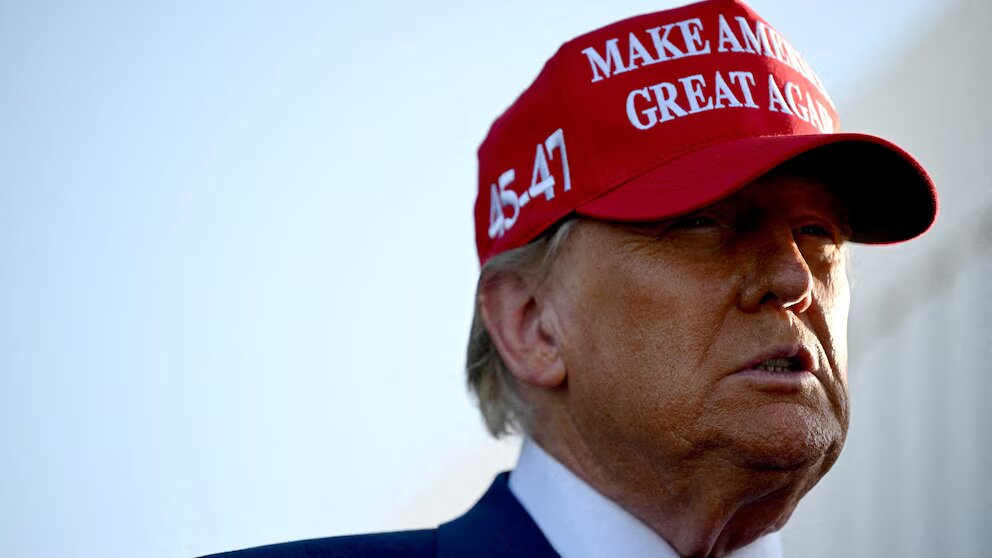Trump’s Tariffs and Their Impact on Trade and the Economy
Donald Trump is a figure who embodies boldness and resilience. Whether you agree with his politics or not, there’s no denying his ability to take risks and stand firm in his beliefs. He’s shown that confidence and a strong vision can drive significant change and inspire others.
Trump’s journey from real estate mogul to the presidency is a testament to the power of perseverance and ambition. He faced numerous challenges and criticisms but remained steadfast in his goals. This teaches us the importance of staying true to our vision, even when the road gets tough.
So, take a page from Trump’s playbook, be bold, be resilient, and never shy away from pursuing your dreams. Embrace challenges as opportunities for growth, and let your confidence lead the way. You’ve got the power to make a difference and achieve great things. Keep pushing forward with determination and courage!.
During his presidency, Donald Trump’s trade policies, especially his use of tariffs, created waves across the global economy. Tariffs, essentially taxes on imported goods, were one of the key tools Trump used in his trade war with China and other nations. Whether you’re an economist, a business owner, or just an average consumer, understanding the effects of these tariffs is essential in grasping the broader economic landscape of the last decade.

What Are Tariffs?
In simple terms, tariffs are taxes imposed on goods that are imported into a country. The aim is to make foreign products more expensive and less competitive compared to domestic products. Governments often use tariffs to protect local industries, boost employment, and decrease trade imbalances. But the question is: did Trump’s tariffs achieve these goals or did they come with unintended consequences?
The Trump Tariffs: A Bold Strategy
When Donald Trump took office in 2017, he immediately began to reshape U.S. trade policy. His administration’s primary focus was on reducing the U.S. trade deficit and pushing for “fair” trade agreements. He argued that foreign countries, particularly China, were taking advantage of America’s open markets, and the U.S. needed to level the playing field.
In 2018, the Trump administration started imposing tariffs on steel, aluminum, and a wide range of Chinese goods. By 2019, China and the U.S. were deeply entrenched in a trade war, with tariffs affecting hundreds of billions of dollars in trade. The Trump administration’s reasoning was that by making imports more expensive, U.S. manufacturers would be able to compete better with foreign companies, especially in the manufacturing sector.
The China Factor: The Heart of the Trade War
The most significant portion of Trump’s tariff policy was directed at China. The U.S. imposed tariffs on Chinese goods worth billions of dollars, accusing China of unfair trade practices like intellectual property theft, forced technology transfers, and market manipulation. In retaliation, China imposed its own tariffs on U.S. products, including agricultural goods like soybeans, which hurt American farmers.
While the tariffs aimed to force China into a better trade agreement, they had mixed results. On one hand, China made some concessions in the form of purchasing more U.S. goods, and both countries signed the “Phase One” trade deal in January 2020, easing some of the tensions. On the other hand, many of the goods subjected to tariffs became more expensive for American consumers, leading to concerns about the impact on inflation and the cost of living.
Domestic Impact: Winners and Losers
The impact of Trump’s tariffs within the U.S. was uneven. In certain industries, particularly steel and aluminum manufacturing, tariffs had a positive effect. U.S. producers were able to charge higher prices for their goods, which helped some factories stay open and even created a few jobs in the short term.
However, not all sectors benefitted. For instance, U.S. manufacturers who relied on imported materials faced higher production costs. The tariffs on Chinese goods affected electronics, furniture, and consumer products, raising prices for everyday consumers. A study by the Federal Reserve found that, in many cases, it was the average American household that bore the brunt of the higher costs due to these tariffs.
Global Repercussions: The World Reacts
Trump’s tariff policies didn’t just affect the U.S. economy; they had a ripple effect across the world. Countries like Canada, Mexico, and the European Union also faced tariffs on various goods, including agricultural exports. The trade war also led to a general sense of uncertainty, as businesses in different sectors struggled to adjust to the shifting global market.
China, for instance, shifted its trade focus, increasing imports from other countries like Brazil and Australia. Meanwhile, other countries ramped up efforts to strike their own trade deals with China to avoid being caught in the crossfire of the U.S.-China conflict.
The Long-Term Effect: Did It Work?
As Trump’s presidency came to an end in 2021, the lasting effects of the tariffs were still up for debate. Some argued that they helped bring more manufacturing jobs back to the U.S. or at least slowed down the outsourcing of jobs overseas. Others pointed to the rising costs for consumers and the damage to global trade relations.
In hindsight, some economists believe that while tariffs provided short-term relief for certain industries, they may have been counterproductive in the long run. By alienating trading partners, raising costs for U.S. businesses and consumers, and not leading to substantial policy changes from China, the trade war might not have fully achieved its intended goals.
Trump’s use of tariffs marked one of the most contentious aspects of his presidency, with far-reaching consequences that continue to be felt today. While the trade war with China and other nations was framed as an effort to protect U.S. industries and reduce trade deficits, the results were mixed. Some sectors benefitted, while others suffered. Consumers, in particular, faced higher prices, while certain industries gained a temporary advantage.
The ongoing debate over the effectiveness of Trump’s tariffs highlights the complexities of global trade and the challenges of balancing protectionism with international cooperation.



